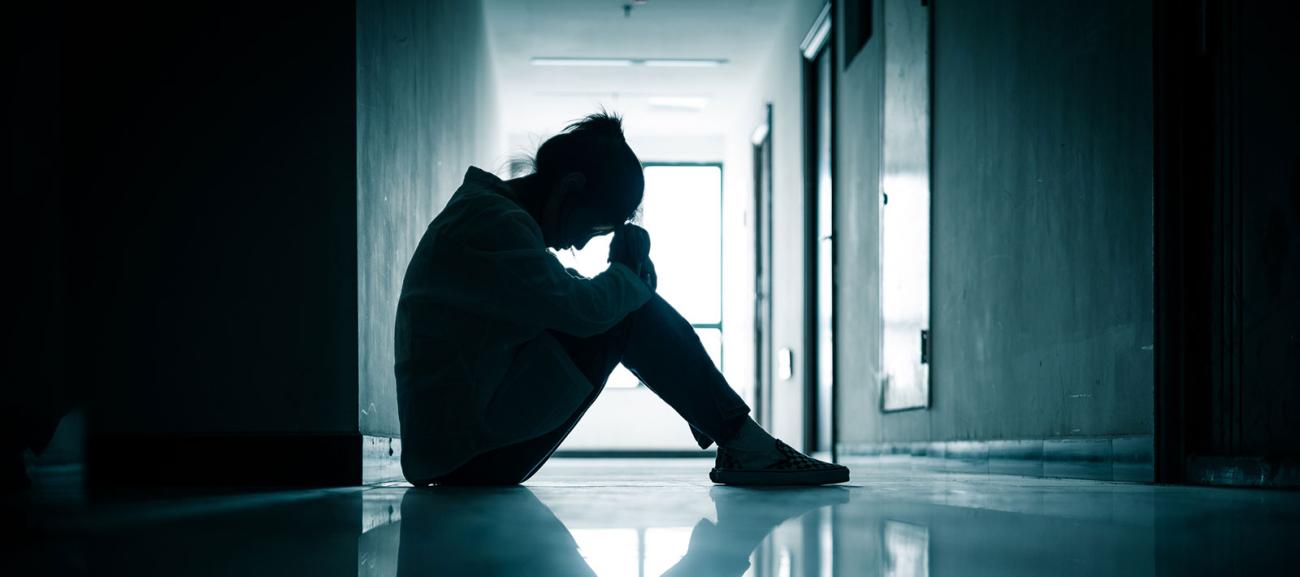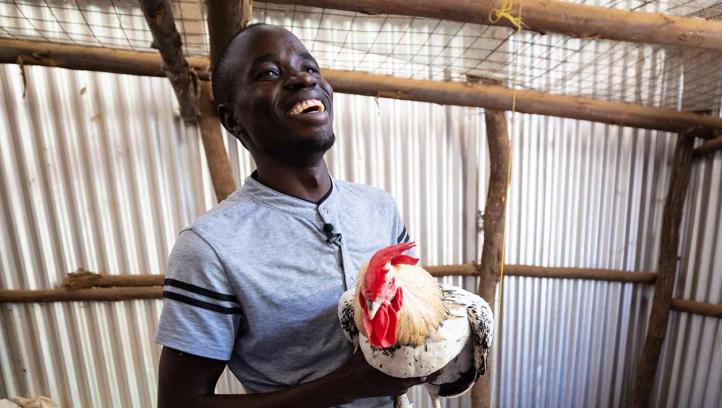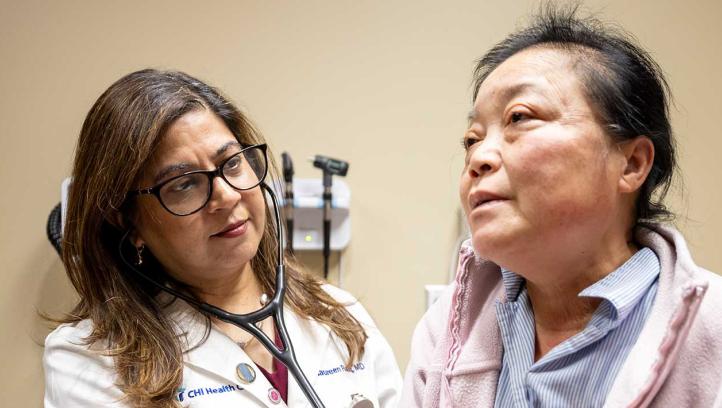
Sadness, hopelessness rise dramatically for teen girls

Nearly 3 in 5 teenage girls in the U.S. feel persistently sad or hopeless, according to 2021 survey data recently released by the Centers for Disease Control and Prevention – representing nearly a 60% jump over the last decade.
The CDC, in its 2021 Youth Risk Behavior Survey of U.S. high school students, found that teen girls are experiencing the highest levels of sexual violence, sadness and hopelessness ever reported.
Among the data, nearly 1 in 3 teen girls said they seriously considered attempting suicide in 2021 – a 60% increase from a decade ago. The report also found more than half of LGBTQ+ students had recently experienced poor mental health, and more than 1 in 5 had attempted suicide in 2021.
While these statistics are troubling, they come as no shock to Creighton University psychiatry faculty who have been closely following the rise of mental health issues among teens.
“It is very concerning, but it’s not surprising,” says Jo Ranga, MD, who is vice chair of the Department of Child and Adolescent Psychiatry in Creighton’s School of Medicine and director of Creighton’s psychiatry residency program and child and adolescent psychiatry fellowship program in Omaha. She has worked in the field for more than 20 years.
“In the past, we would say that at the start of puberty, the depression rates would go up 2 to 1 in girls to boys. Now we’re seeing that to be 3 to 1,” she says. “Teen depression, in general, has doubled, but in girls it’s more acutely so.”
“This is really a time of mental health crisis, especially for teens,” says Wendy Watson, MD, associate professor in the Department of Psychiatry and director of the child psychiatry fellowship program at the Creighton School of Medicine in Phoenix.
“I’m not only working with my own patients, but I have friends calling me asking me what to do with their own children – kids who have never had mental health issues in the past,” Watson says.
Why the Dramatic Increase?
While Watson and Ranga say there are multiple factors contributing to the rise in mental health issues among teens, they call attention to two big areas of concern: disconnections caused by the COVID-19 pandemic and negative effects from increased social media usage.
“We had an increase (in mental health concerns) prior to the pandemic, but the pandemic really was a breaking point for kids and teens and their parents,” says Watson.
Both Watson and Ranga also see a strong correlation with the rise in social media usage.
“When you think about the adolescent development, teens are in the process of finding their identity and they are very connected to their peers,” Ranga says. “They seek validation from their peers much more so than they do their parents.”
That comparison and validation is a major part of the social media experience for teens.
“When they are on social media, that social comparison is sky high,” Ranga says. “They follow influencers; they look at images that are air-brushed, seemingly perfect. In any moment in time, it seems like someone has it all together.
“Then they reference it back to themselves. Normal life has its ups and down, and they feel that as a deficiency in themselves. And that is not real.”

Issues related to body image and peer validation can be especially heightened for teen girls, says Ranga, and the constant access to social media – and a culture in which “likes” are celebrated and criticisms are crushing – can lead to a sort of “hedonistic treadmill.” In addition, nearly half of U.S. teens, ages 13 to 17, also report being cyberbullied, according to a 2022 Pew Research Center survey. Mental health experts also worry about “contagion effect,” wherein social posts about self-harm or suicide, for example, could lead to copycat behaviors.
“There is really no switch off, and there is no safe space,” she says. “So, when you’re immersed in that constant stream of social comparison and seemingly perfect situations, it’s really hard to break away from that and feel life authentically. And I think that’s especially true and unique in a girl who is going through her teen years.”
“These are trends that you see in teens, but these are also trends you’re going to see in young adults and as people advance in life,” says Rajesh Tampi, MD, professor and chair of the Department of Psychiatry and the inaugural Bhatia Family Endowed Chair in Psychiatry.
“It’s a phenomenon of being alone in a crowd. You think just because you are connected on the phone to someone that you are connected. But it is the quality of connections, not just the number of connections that really matter.”
What Can Parents Do?
The Creighton psychiatrists remind parents that the teen years can be turbulent. Teens are trying to carve out their own identity; their bodies are changing; they’re looking to fit in with peers; and they are influenced by the media.
“But it proceeds, most commonly, positively and reasonably,” Ranga says. “Pathology during this period is not normal. That’s the first thing I want to underline. This is not normal teens behaving badly. This is a clear-cut deviation from what normal teen development can look like, despite the normal ups and downs of teens.”
Watson says there are certain warning signs that parents should be watchful for in their teens, which can include:
- Dramatic changes in sleep patterns, appetite or grades
- Sudden loss of interest in relationships, particularly with family members, and in activities they previously enjoyed
- Increased irritability and general sense of sadness
“You’re really looking for stark differences, like a light switch was flipped and you’re like, ‘Wow, I don’t know what’s going on with my kid,’” Watson says. “That’s a time to reach out to your pediatrician and get a referral for therapy.”
The Creighton professionals say that it’s important for parents to keep the lines of communication open and to set boundaries with their teens.
“It can be an uncomfortable topic for adults,” says Watson. “The dialogue can be incredibly hard to have. The whole point is just starting it.”
The CDC report gives parents an opportunity to bring up the subject with their teens. Or parents may want to bring up the subject in the context of giving their teen the tools to help a friend.
“You want to normalize the conversation,” Watson says. “That, ‘This is something we talk about. We talk about these issues.’ So, when the time comes that they need help, they go to the person who can help the most, their parent.”
“Another thing for parents to be aware of is teens function on their own clock,” says Ranga. “They have times that they will speak to us, and times that they won’t. So just holding space and listening reflectively is really important. Many times, a teen just wants to talk, and they can really shut down if too many pieces of advice are given.”
Tampi says it’s also important to note that, neurologically, teen brains aren’t fully developed, so it’s important for parents to provide boundaries and levels of autonomy that are appropriate to the developing teenager.
“Parents who are there for their children longitudinally, with brief quality interactions, I think is so much better than somebody who provides one interaction and then nothing more,” Tampi says. “It’s a series of relationships.”
Watson says that parents can also help teens “find their group” – whether that’s through sports, the arts or any number of social or service activities.
“A lot of kids and teenagers, that’s what they’re looking for,” she says. “They’re looking for their people. Anything we can do to get them connected to the community is a good thing.”
While the American Academy of Child and Adolescent Psychiatry reports a severe national shortage of child and adolescent psychiatrists, addressing the issue of teen mental health also requires a holistic approach.
“We will not have enough psychiatrists to meet our needs in the present and the near future,” Tampi says. “What we will need is other providers to step in – social workers, therapists, occupational therapists, school-based counselors.”
Research is also key, he says, along with addressing mental health concerns early and a general acceptance that mental, physical and spiritual health are all important to the well-being of an individual.
“It’s the population health perspective. It’s well-being,” Ranga says. “It’s up to each of us to inculcate that in ourselves and then spread the word. That’s important for us as parents, teachers, etcetera, so that we can be role models for our youth, who are looking at us and watching our behaviors.”
Getting Help
Watson suggests the following resources for teens and parents looking for help.
Teenline – teenline.org. “This is a resource that teens I work with tend to like the best. It has options to connect by phone, email or text, and they also provide mental health training for schools.”
988 Suicide & Crisis Lifeline – 988lifeline.org/help-yourself/youth. Anyone of any age can dial 988 from their phone to get free and confidential support, 24/7.
The Trevor Project – thetrevorproject.org. “This is a great mental health resource for teens who are members of the LGBTQ+ community.”












